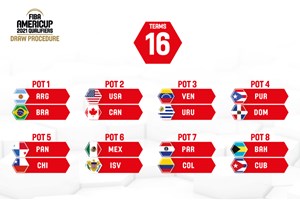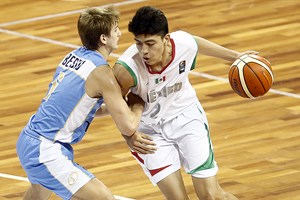
US Open Court Program seeks to encourage free play in the community
COLORADO SPRINGS (Colorado) - Being one of the world's basketball powers at all levels, the USA Basketball now focuses on mass-level sports at the grassroots level with the Open Court program.
The program established in 2015 meets the need for a youth division that the federation had, with the purpose of giving back to the young community the possibility of practicing basketball freely and on their own.
In the initiative, several facilities in different cities around the United States open their doors so that children from six years old and up can exercise freely at least once a week within a period of three months. The centers are divided into stations to practice different skills and each participant is grouped according to their age in each of the activities that they select.
"It's free for all children and the best part is that when they get to play it's pretty unstructured," Jay Demings, director of the Youth Development and Sports Division for USA Basketball, told FIBA.basketball. "You can come and take part in several stations, but you can also choose which drills and what station you want to do. You can play games too. They can come every week but, we understood that for young people to come, we need to incentivize them as video and cell phone games do. "
With that in mind, the project established a reward system where participants also accumulate points through their attendance and even if they refer a friend. At the end of 12 weeks, they can exchange the accumulated points for sports merchandise such as official footballs, shirts, and coats of the federation.
To supervise the sessions each facility has a leader, an assistant leader and a registrar to keep track of the attendance and the points accumulated by the participants. In addition, there is a security coordinator present with First Aid training, who acts as a point of contact in any emergency case. There are also 4-8 field monitors, which are people -not coaches- in charge of maintaining order on the court and cleaning.
According to Demings, the lack of free participation of the community outside of clubs or organizations is the result of an effort by other media such as the video game industry to captivate the attention of children. In addition to the rigor of the same clubs and teams through the power that has been given to the leaders and directors of these programs.
"Between 1940 and 1950, our government put a basketball court on every corner where children could play. That does not happen anymore, "said Demings. "This has become so structured that if you do not have a coach telling you what you have to do, playing games or giving you a uniform you're just not going to play, you better use video games."
Currently, the Open Court project impacts around 6,000 participants each year and has expanded from four cities in 2015 to currently have 12 cities. However, Demings points out that it has not been an easy process and that he trusts that the numbers will increase every year.
"I'll be honest, this was not successful at the beginning," Demings said. "It was very strange for them [children] just come to the center and start playing immediately. I was waiting for the referee to start the game. They were not sure how to get organized, but it has improved a lot. We hope it expands every year.
"We started Open Court to bring back free play, but also mental freedom, freedom of spirit, freedom of thought and movement," said the director.
FIBA















